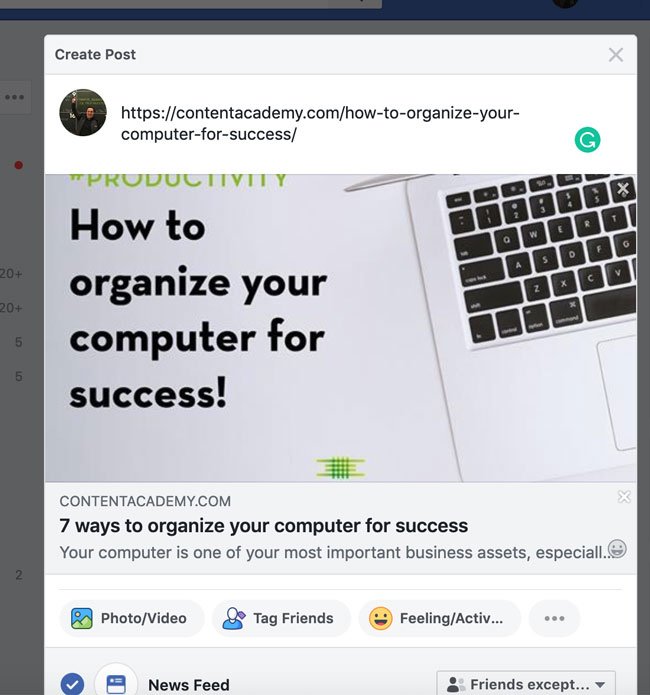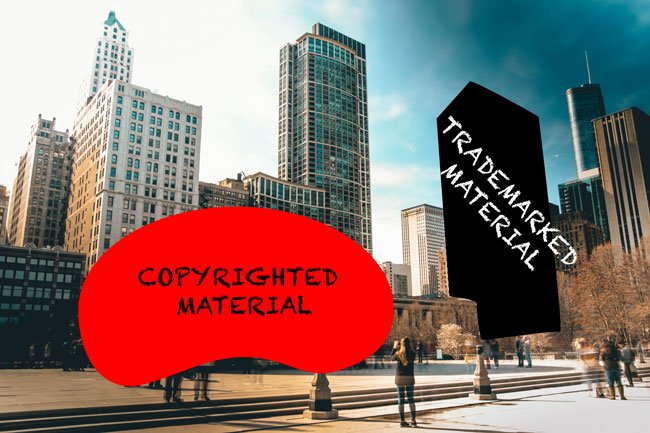#BloggingTips
Sources for great photography content
And how to use them on your blog properly.

By: Scott Winterroth
February 18, 2019
Where to find and how to properly use photography for your blog and content marketing.
Let’s face it, those who are killing it blogging are utilizing multiple mediums to tell their story. A trifecta – if you will – of clear writing, striking visuals and hot media that spoon feeds content using audio and video content.
The challenge with blogging today is, you can’t expect a blockbuster post simply by arranging copy, images, and multimedia into a post. Each of these mediums come with their techniques. Sometimes luck will strike and the right media paired together will make a hit. Often that only happens after years of building a technique and understanding of each medium.
Think about it; an award-winning film is not award-winning without a perfectly complex combination of writing, acting, filmmaking and the list goes on. Rather success only comes from the sum of all of those parts. The good thing with blogging, we can fix and iterate our content. A flopped film is just a flop.
If your blogging is not providing you with blockbuster success yet, then I invite you to join me for a series of back to basics. I know that you will find this information useful for sharpening up your storytelling skills and building the blog you want.
If there’s one thing I’ve learned about success, regardless of where you are at in your blogging journey – what got you here might not get you to your next level. Success requires constant review of what you’re doing and the persistence to keep it going.
What you will find in this Post:
- Sources for great photography overview
- Facebook Text Overlay Policy
- What is stock photography?
- Free Stock Log Template Download
- Licensing and ‘Fair Use’
- Stock photography websites
- Creative Commons (CC) Images
- Open Access and Public Domain Images
- Going further with your own photography
Estimated Reading Time
- 14 minutes, 15 seconds.
- Contains approx. 2,852 words
TL;DR – Listen to this post on my podcast:
Back to Basics: Sourcing for Photography
Blogging is a lot about writing, but we must not forget that images and graphics are 1000% apart of the content strategy. Adding a blog post to your site without some type of imagery is like only telling half of the story.
It’s safe to say – in an internet era – the adage is still valid. A picture is worth a 1,000 words. Not only assist in telling your story but, now more critical than ever with the Open Graph “grab the first image of the post when posting a link to Facebook” and entire social media platforms centered around image and video content.
Images are not just a pretty thing, they are very much a part of your content marketing strategy and must for driving interest and clicks. Since images have become so important when it comes to blogging and content, you simply can’t just use any old image or create a picture with a bunch of text overlay.
You need imagery that is striking and enticing, and that can almost make your point without the use of words. Especially since distribution platforms like Facebook and Instagram want you to avoid using text on top of images.
Example of the Facebook Open Graph that automatically pulls in the post’s featured image when sharing onto the social network.
Facebook Text Overlay Policy
Facebook, which includes Instagram, suggests that no more than 20% of the image should contain text.
Facebook prefers ad images with little or no text, because images with a lot of text may create a lower-quality experience for people on Facebook. [Source]
From my understanding, this rule applies to their advertising policies and not necessarily to “organic” content. But last time I checked there wasn’t much action going on with organic content. I would guess their algorithms also look for text-heavy images in all of the news feed.
Therefore, the need for high-quality images that can convey a story on their own is more important than ever before. As a blogger, maybe a solo blogger or a small team, you’re probably continually sourcing for images and likely utilizing stock photography.
What is Stock Photography?
Stock photography is images and artwork created with the intent to be sold to art directors or marketers who need a photo but don’t maybe want to take an original photo. Stock has been around for a long time but the availability and ease of access exploded in the early twenty-teens and continues to evolve even today.
This concept pre-made marketing images has gotten a bad rap over the years as millions of marketers seem to use the same cheesy photographs of “business team at conference table cheering” or an auto mechanic that doesn’t look like an auto mechanic but is holding a wrench, so it works type stock.
Every catalog, sales page, and social media graphics seems to use the same photos of the same models with the same type of cheesy poses.
While stock has its reputation, it can be an excellent source for images for your blog as long as you take the time to pick the right ones. There are even some excellent stock photography websites that offer all types of multimedia – sometimes even for free or with attribution.
Let’s face it, stock photography has its advantages. It’s a low-cost way to find great photographs you can use to tell a story, in a pinch and on a budget. Plus, stock is often high resolution so it looks good in print applications and very large website images. It’s also usually royalty-free meaning you don’t always have to attribute or pay the original source and there’s a paper trail so you’re always in the clear if you can attribute where you purchased and downloaded your creative from.
In fact, this brings me to my first free resource for this episode. I recommend keeping a stock image download log where you keep links and sources for all of the stock images you’re used on your site. This takes a bit of time to keep this up but it’s totally worth it if you ever had a source in question.
FREE RESOURCE DOWNLOAD
Download a free stock photo inventory template I created so you can easily inventory your stock image downloads. This just takes a second to fill out as you work and could be a huge time saver should you ever need to prove when and where you downloaded a photo.
We can thank the sharing economy for the influx of new content which has basically driven the price of some high-quality stock down to, free. Since a plethora of creators are sharing their work just exchange for attention. Now, that doesn’t mean you should completely rip off images. Would you want someone to rip off your blog content?
On sites like Unsplash.com and Pixabay.com, creators are knowingly giving away their work, unlicensed, and not asking for any form of payment or even attribution. In exchange, they receive promotion on these rather popular sites to their portfolio or larger body of work and can say they have more than a million downloads. On a side note, be sure to thank the photographers who you use their images from. A kind note can go a long way.
Licensing of stock photography can be tricky, especially when you’re not paying for it but obtaining a license is in your best interest.
Most stock photography offer licenses for the photos they sill or distribute. It’s always best to review what the license entitles you to do with the photo you acquired. Some sites allow for any use so long as you attribution the author or source. More on this later. Other photos are available for purchase or download but they are not available for commercial use and marked for editorial use only.
Some may say, it’s a rather grey area if your blog is considered news/editorial, so it’s probably best to either ask for permission or avoid using photos that meant for editorial use only. Commercial licenses provide publishers with the most freedom but even that still might have some restrictions.
Now, this all comes with even more caveats. Just because a photo is available on a stock website, doesn’t always mean it’s cleared for commercial use. For example, if it is a photo of a celebrity or a recognizable landmark, that doesn’t always mean you can use that photo for anything you want.
An excellent example where there might require some additional licensing would be a when the photo contains a work of art. Here in Chicago, everyone takes a photograph with the “Bean” aka Cloud Gate and you can find images of the bean on many stock photography websites. That doesn’t mean you can use that photo for your commercial needs – and you’re blogging to grow your authority online is a commercial interest.
Certain limitations with photos always apply, especially if contains intellectual property, a private residence or identifiable human faces – especially of minors – within the photo. Always use these types of photo with caution, and with a model release or permission from the property or owner.
We live in a mobile camera phone enabled world where everyone posts images of pretty much anything online these days but it’s always good to be safe and at least know what you’re doing could be used against you. In some cases, blogging may tip towards fair use but always proceed with caution when using imagery with identifiable content. Know that you might be – at a minimum – asked to remove and stop using a photo – or worse. Never use a picture in a way that perceives endorsement or ownership without written approval. Meaning the subject in this photo endorses my product or I own what is in this photo.
Especially celebrities or influencers. Just within the last few years, a famous basketball star won a massive settlement from a grocery store chain where when the judge agreed the star’s likeness was used without proper compensation or consent.
When you become famous, do you want people ripping you off? I don’t think so.
My final tip for keeping yourself in the clear with stock photos, be sure to avoid downloading from online sources where there’s not a strict image upload approval process or vetting process. Do everything you can to cover your butt when it comes to using photos. Like I mentioned with the bean example, just because a user uploaded the photo doesn’t mean they have the right to grant you an anything you want to access.
Stay in the clear by knowing the usage rights and get permission whenever it’s not clear. Purchase from reputable stock photography sources and maybe even only ones based in your country of origin where the copyright laws are in line with the license of the artwork.
Stock Photography Websites
There are hundreds of free and premium stock websites but as I mentioned try to stick with reputable sources. Some of the free sites also link to premium photos as a way to make money so be sure what you’re clicking on and if it’s an external link.
For the premium sites, pricing, of course, varies from site to site but most offer an option for the purchase of one photo or a subscription for a bucket of photos. The more premium sites have cool ways to search for photos within their collection by color and other advanced search options which can help you save time. And you know time is money folks! 🙂
Other sources for photography for blogs
Stock photos are the most common source for images, but there are some other sources that you may or may not be aware of. Here are some other maybe not as apparent sources for free, low-cost creative commons or public domain images for your blogging and content marketing efforts.
Creative Commons images
Creative Commons (CC) licenses are one of several public copyright licenses that enable the free distribution of an otherwise copyrighted “work.” An author of a piece of work, including photographs, can choose to grant other people the right to share, use, and build upon a work they created.
Creative Commons is not really a source for images but rather a license that allows for public use of images as long as the users follow the license restrictions. There are six main licenses of Creative Commons with the most “restrictive” of the six main licenses, only allowing others to download works and share them with others as long as they credit the original author.
The least restrictive license lets others distribute, remix, tweak, and build upon a piece of work, even commercially, as long as they credit the author for the original creation. This is the most accommodating of licenses offered but still requires attribution to the source. This means, if you decide to use a creative commons licensed photo on your blog then you must use the picture in a way where you can attribute the source with a link.
A bit of fair warning, just because a photo is available in “Creative Commons” doesn’t mean that the user who uploaded it had the rights for you to use any which way you want. Always err to the side of caution. Again, it’ helpful to keep track of what you download so go and use that template I created for you.
- Wikimedia Commons
- Google Advanced Image Search with CC Filters
- Flickr – Advanced Search: Commercial Use Allowed and other licenses
Open Access and Public Domain Images
Some images are available to the media and public because they were sponsored by taxpayers or are now in the public domain because the copyright has expired and the author did not renew.
- Government sites such as NASA, Library of Congress, National Parks Service and more
- U.S. History Images (War maps, other historical imagery)
- Public Domain Review
Going Further with your Photography
The truth is, these are all excellent sources for images that already exist but aren’t we in the business of original content? You probably wouldn’t go and copy someone else’s blog post, using stock photos can almost be the equivalent.
If you want to take your blogging and content marketing to the next level you can’t expect stock photos to always carry you there. In order to win, you have to go above and beyond everyone else, so I would suggest looking at making some of your own photos and video to accompany your blog content and storytelling.
Ten years ago, I took a field photography class, and it was one of the best things I did to get into and accelerate my content creation efforts. At the time I was music blogging so instead of just going to a concert and writing about what I experienced, I was able to share some of my own photos that I took of the artists. This was a fantastic experience, and it also helped me create a portfolio of just my photography. I had to invest the time into some equipment and a workshop, it’s paid itself back tenfold.
You don’t need to invest in brand new equipment to get started. Look up some used camera equipment on Facebook Marketplace or even eBay, get the best camera and lens you can afford at the moment. Then go out and take photos! I love photography, it’s now a big part of my job, and thankfully I’m able to use my creativity to make it happen.
You can use your smartphone’s camera, and I totally encourage that. Honestly, a little investment into some entry-level camera equipment can go a long way – even if used.
Clients will take you more seriously when you show up with what appears to be the right equipment for the job. If you hired a plumber and they showed up with plastic tools or something, would you think they were legit? Probably not, so as a creator you need to show up to your job with the right tools for the trade. Of course, it’s up to you if you learn how to use these tools correctly. Just because you own a camera, doesn’t make you a pro but it puts you on the right no-excuse path to becoming one.
For some recommendations on entry level photography equipment then be sure to subscribe to our blog to receive many more awesome ideas delivered right to your device.
Questions, email me at [email protected].
#getblogging!
Listen to my podcast at blogyouwant.com for more helpful blogging and content marketing tips.







0 Comments